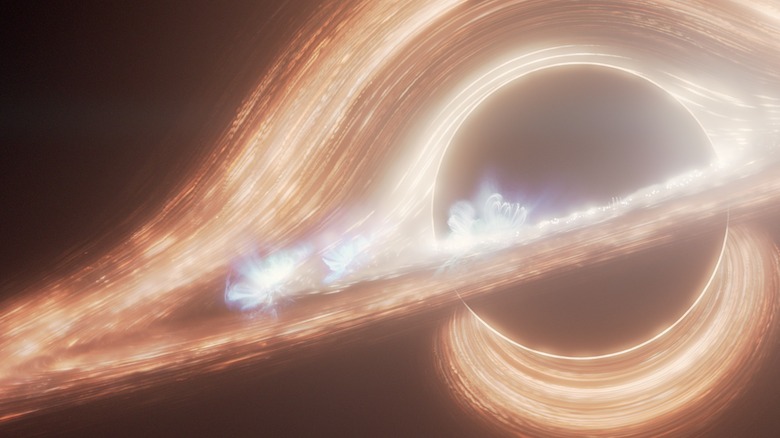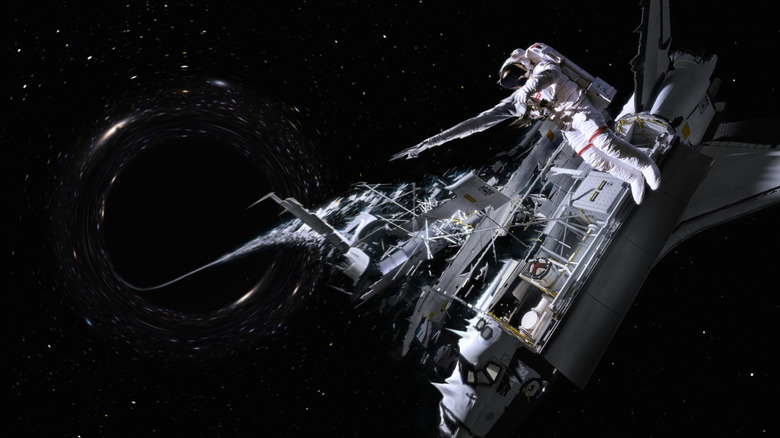What Would Happen If A Plane Flew Near A Black Hole?
In the world of Hollywood flicks and science fiction, black holes are often depicted as a portal to some dark alternate reality that subjects wayward space explorers to unspeakable horrors or makes them travel back and forth in time. In reality, the fate of a plane flying close to a black hole will depend on the mass of the black hole we're talking about, and how close the plane gets to the cosmic monstrosity. In general, black holes exert an immense gravitational force, and it can be felt at a vast distance. But the degree to which a black hole can alter the course of an object nearby depends on the distance.
A plane moving close to a black hole will first feel this pull at the innermost stable circular orbit (ISCO). As the name suggests, it is the closest possible circular orbit where an object can remain stable. "Closer than the ISCO, no stable orbits exist; a particle closer than the ISCO will spiral down into the black hole or will be pushed away," explains the European Organization for Nuclear Research, known as CERN. If the plane is fast enough (and with sufficiently high mass), it can move closer to the black hole. But things are going to get risky super fast as it gets closer and reaches the photon sphere. This is the region where gravity is so strong that light (or, rather, the particle unit called a photon) gets locked in an orbit. Do keep in mind, we have not entered the real danger zone yet.
The dark fate of a daring adventure
Now, let's assume that the plane is assembled extremely well and can muster enough firepower to handle its trajectory just fine without getting pulled in by the gravitational pull of the black hole. As the plane moves inside the photon sphere, it will approach the event horizon. At this point, the pilot has to make a return, or risk getting lost forever. The event horizon is where nothing can escape the gravitational pull of the black hole. Unless the plane is moving at the speed of light, which is the escape velocity at this distance. As per the theory of relativity, nothing in the universe can travel faster than light. And even if we assume the plane can theoretically achieve that speed using some magic fuel, it just won't hold together structurally.
That's because the region of the plane closer to the black hole will experience more extreme gravitational pull than its tail area, which means it will be torn apart. But let's just assume, for the sake of curiosity, that the plane has kissed the event horizon of a black hole. This is where the horrors actually begin, thanks to a process called "spaghettification." What's that? "This effect essentially stretches out the object more and more as the object gets closer to the black hole, creating a long, thin shape," explains NASA. The gravitational pull of the black hole is so strong that it can make something as dense as stars appear as if "squeezed like a tube of toothpaste. Or, the plane can get catastrophically flattened like a pancake and end up with a thermonuclear blast. In a nutshell, it won't be a great ending to a deep-space cosmic vacation.

